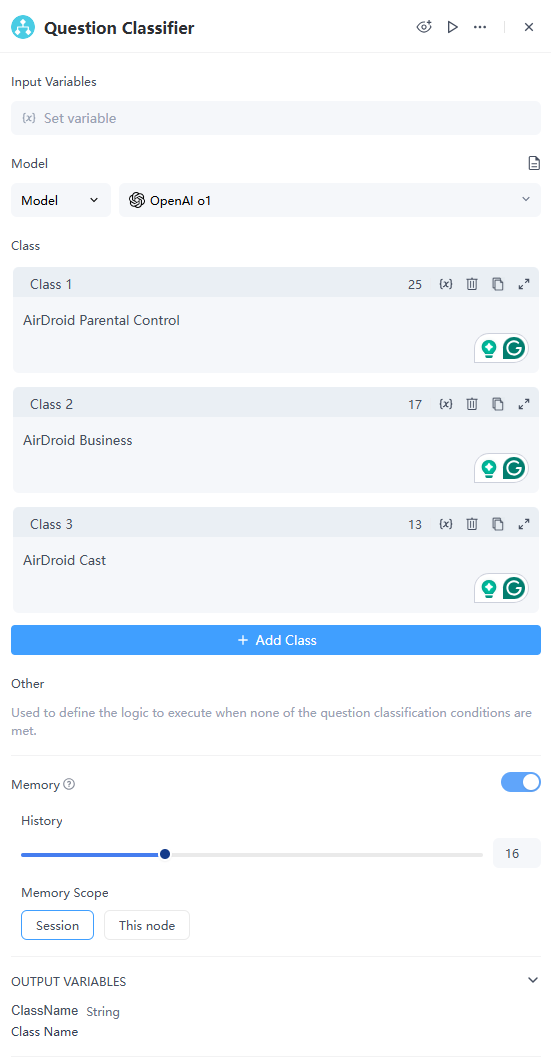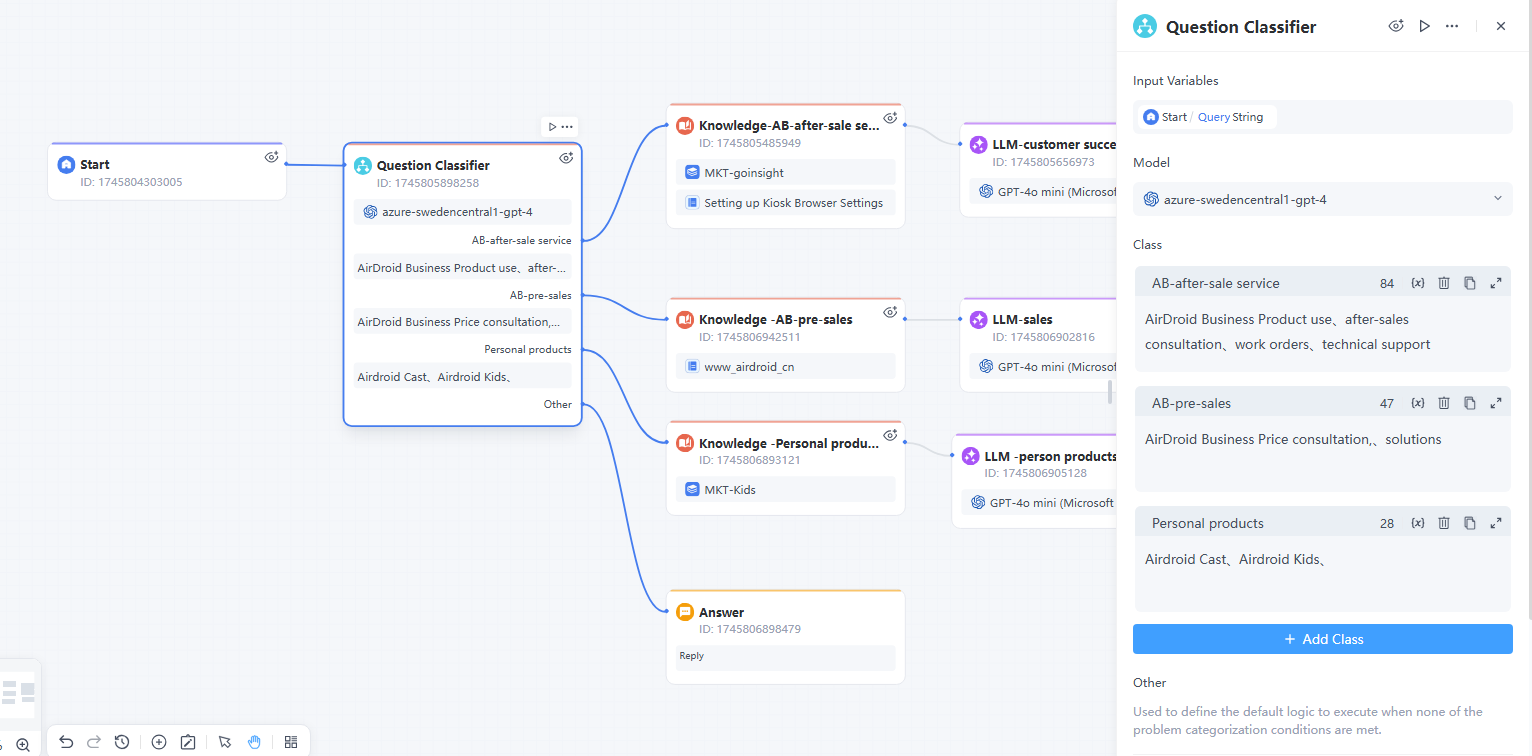Definition:
The Question Classifier node leverages the natural language understanding and reasoning capabilities of large language models (LLMs) to perform semantic analysis and categorize text inputs, such as user queries, conversation content, etc.
Using the predefined classification labels (like "After-Sales", "Pre-Sales"), it generates the classification result that best matches the semantic meaning of the input. The result is then passed to the downstream nodes to dictate the subsequent processing approach.

How to configure
Input Variables
It represents the content to be classified and supports input file variables.
Model
Use an inference model for optimal results. Since the Question Classifier relies on language classification and reasoning capabilities of LLM, selecting the right model significantly enhances the classification accuracy. Adjusting the model’s settings like "Temperature", is also supported to customize how it behaves.
Class
It’s permissible to add multiple classifications by writing keywords for each one, allowing the LLM to better understand the classifications and route the input into the right workflow. When no classification conditions are met, the model automatically executes the “Other” classification.
Memory (Interactive Flow)
When memory is enabled, the classifier retains the conversation history to help the model perform deep analysis of the context within the current chat. It leads to improved contextual understanding and better response accuracy in interactive dialogues.
- History: The LLM can remember up to a maximum of 50 past user messages. You can set the History Count range from 1 to 50.
- Memory Scope: The model records the last user prompt to keep track of the current session and node. to enable the memory at the current node level, set the last user prompt as Memory.
Output Variable:
The model returns a String variable named ClassName, containing the selected classification name information.
Simple Case Example:
This model works great for classifying customer service questions. In a typical Q&A scenario, the Question Classifier automatically sorts customer questions before directing them to the right knowledge base for precise and helpful user responses.
Below is an example workflow template for a product-related customer service scenario:
In this example, we set up three classification labels/descriptions.
- Classification 1: AB-after-sales service
- Classification 2: AB-pre-sales
- Classification 3: Personal products
- If the user query doesn’t fit any of these conditions, the model executes the “Other” classification.

When users enter different questions, the question classifier will automatically complete the classification according to the set classification tags/descriptions. For example, if the user enters:
- "How much does AirDroid Business Enterprise Edition cost?" → Goes to “Pre-sales” classification.
- "How to create and deploy a kiosk configuration?" → Goes to "After-sales” classification
- "How to cast AirDroid Cast to TV?" → Classify it as "Personal product-related issue"
- "What's the weather like in New York today?" → Goes to "Other issue"
Note:
- The input variable must be a string and it cannot be an empty question.
- Each classification name must be different. Don’t use duplicate or invalid names.
- Keep each classification description clear and concise to allow the Classifier to make correct judgements.
Leave a Reply.